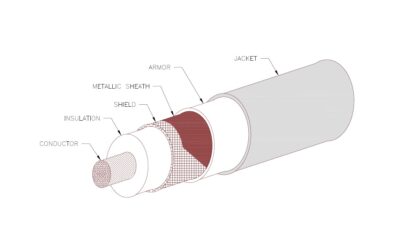The role of commissioning providers (CxPs) is changing which means more successful project delivery.

There are many ways for commissioning providers (CxPs) to offer talent and expertise to the building industry. However, skill sets are changing; how services are performed, who’s under contract to whom, and breadth and depth of services are more varied. CxPs are an integral part of the start-up and operational performance of buildings that are metered, measured, rated, analyzed, and rewarded (or not) by stable occupancy and owners’ return on investment (ROI).
The market landscape
Building commissioning has occupied a niche in the building industry for nearly 3 decades. Initially an unpopular adjunct to commercial construction, driven by “energy conservation” (the stick) and supported through program incentives (the carrot), commissioning materialized as a third-party role to protect building owners. The concept then, as it is now, was to ensure that building systems work—the first time, and all the time.
It’s been a bumpy ride, but along the way, commissioning became a generally accepted aspect of project delivery. Commissioning evolved as a relatively straightforward process to validate the performance of HVACR systems. Looking forward, however, CxPs are increasingly tied to complex, interdependent systems, practices, and teaming arrangements due, in large part, to the emergence of complex technical design, construction, and operations solutions.
The commissioning landscape is changing right along with the building industry. It’s time to evaluate how the role of CxPs will contribute to successful building industry trends in the future. Those trends, in new construction as well as existing-building improvements, can be divided into the following three groups:
People
Relationships: Relationships among project stakeholders are becoming more complicated as construction processes morph, both rapidly and constantly. Few stakeholders have a clear picture of overall project practices. CxPs, as quality assurance experts in system performance and project phases, can unite people across the process and framework. In the future, the design team, CxP, and contractor teams will become more integrated for each project.
Large commercial-portfolio owners are hiring commissioning staff to ensure ongoing energy efficiency of their new and existing buildings. Especially in health care and high-tech, these employees are creating the projects, developing the owner’s project requirements (OPR for new construction) or current facility requirements (for existing buildings), and then hiring outside CxPs to assist them with implementation. Most of the work in this market is relationship-based.
Architecture, engineering, and construction groups, as well as original equipment manufacturers—like major controls systems manufacturers—are building in-house staff to provide commissioning as part of their “full-service” offerings. Although this strategy appears to impinge upon the role of third-party providers, internal staff generally are not specialists in the requirements and expectations of owners who are not existing clients.
Leaseholders of commercial office building space are becoming more sophisticated in terms of the functionality and comfort their space offers. CxPs provide the capabilities necessary to bring buildings up to their most efficient operational state—and keep them there.
Integrated practices—new construction
Contracting: Contract relationships are continually moving targets right now within the new construction world. The question is how best to deliver a functioning, quality-performance building through a design-bid-build (DBB), design-build (DB), construction management at risk, or progressive design-build process. In new construction, traditional DBB contracting is giving way to a more DB model, which in turn is shifting toward an integrated approach that brings the design team, construction contractor, consultants including the Cxp, owner, and facility manager together to plan and deliver the project. This methodology, known as integrated project design (IPD), enables CxPs to contribute to performance planning early, but also requires them to become familiar with the IPD process and with multiparty contract language.
Modeling: The use of building information modeling, virtual and augmented reality, design review, and other approaches to project development can detect and reduce design problems. CxPs understand how systems and assemblies function and can be more engaged in spotting and solving performance issues before they’re irreversibly implemented.
Specialization: Sophisticated building automation, energy management, and data analytics on the software side, and onsite energy generation and storage systems on the hardware side, suggest that commissioning general practitioners, are likely to further specialize as energy and building systems, codes, and standards progress. CxPs who specialize in systems beyond HVACR will benefit financially by contributing knowledge and experience to a more holistic approach to the pursuit of high-performing buildings.
Value-added Cx practices—existing buildings
Value versus ROI: Existing-building commissioning (retro- or recommissioning) in the private sector is being driven by the owner’s bottom line—maximizing a facility’s value if there’s an acceptable ROI. Commercial owners typically hold buildings from 5 to 10 years. The question, which CxPs can help answer, is “How much time and effort should be put into designing and maintaining operation of the building as compared with the savings that result from that effort?” There is a point where the value is insufficient to provide an ROI.
Tuning up or replacing systems to modernize and extend building life, retrofitting space and systems to accommodate new occupants, or upgrading energy efficiency to meet benchmarks, rating systems, or codes all represent value/revenue investments. CxPs have the knowledge, skills, and abilities to provide consulting services to owners of existing buildings, helping to revamp operations and bring them to a model that will be as efficient as its systems allow.
Policies
Long-term efficiency is the goal of government agencies as they endeavor to reduce their carbon footprint by 2030 or 2050. Codes have become the enforcement tools to improve energy efficiency in buildings. The longest and most stringent track record of commissioning code implementation is on the West Coast via the Washington State energy code, Oregon’s Energy Efficiency Specialty Code, and California Title 24. As a result of these codes, CxPs are being asked to validate that the energy efficiency is actually delivered, not just predicted, which requires that the commissioning service evolves into building operation services after the initial project turnover.
The landscape for construction processes is constantly changing to find and launch the best implementation methods to achieve energy efficiency and performance goals when building or remodeling commercial facilities. In addition, owners are seeking the best methodology to maximize ROI, while CxPs are being asked to deliver more value to the process at more competitive fees. Those who have the expertise to meet these changes will benefit the most.
Bruce A. Pitts has more than 40 years of experience in design, project management and commissioning. He is the Group Leader of Wood Harbinger’s mechanical engineering/industrial systems team with a comprehensive project perspective. His diverse portfolio includes new construction and upgrades in office buildings, aviation facilities, medical facilities, college campuses, K-12 schools, computer facilities, and operations, training, and maintenance centers. Bruce currently serves as president of the Building Commissioning Association (BCxA) and is on BCxA’s International Board of Directors. In this position, he is a contributing member of BCxA University, creating curriculum for and teaching their new-building and existing-building commissioning classroom courses. Pitts also teaches courses on many aspects of commissioning at conferences and through webinars. He is also a member of the APPA/BCxA “Building Commissioning Handbook” update committee and the Project Committee for ASHRAE Standard 202-2013, Commissioning Process for Buildings and Systems Commissioning.



